
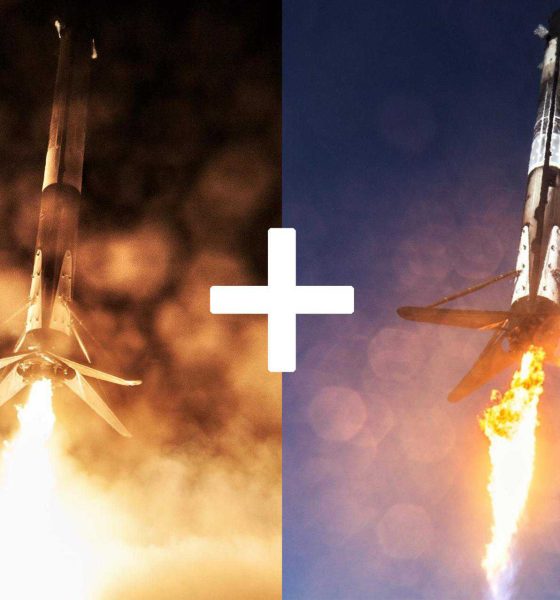
News
SpaceX set for back-to-back weekend launches: Crew Dragon abort test, 60 more Starlink satellites
Two SpaceX Falcon 9 rockets are currently on track to launch back-to-back missions just a handful of days from now, potentially supporting Crew Dragon’s second flight test ever and yet another Starlink satellite launch a little over two days from now.
Known as Crew Dragon’s In-Flight Abort (IFA) test, the first mission is scheduled to lift off from Kennedy Space Center Launch Complex 39A (KSC LC-39A) no earlier than (NET) 8 am EST (13:00 UTC), January 18th and will almost certainly produce some spectacular fireworks (even more so than usual). During the test, SpaceX’s newest flightworthy Crew Dragon spacecraft will attempt to escape from a supersonic Falcon 9 rocket, exceptionally challenging conditions that will almost certainly result in the immediate (intentional) destruction of Falcon 9’s upper stage and booster.
A few miles to the north, SpaceX is preparing an entirely different Falcon 9 rocket for the third launch of 60 upgraded Starlink v1.0 satellites in barely two months, scheduled to lift off NET 12:20 pm EST (17:20 UTC), January 20th from Cape Canaveral Air Force Station (CCAFS) Launch Complex 40 (LC-40). While the duo of launches will break no records for SpaceX, they will certainly set the tone the company is aiming to keep throughout the rest of 2020.
On January 11th, SpaceX successfully fired up Falcon 9 B1046 at Pad 39A, performing the booster’s fifth routine static fire test (if not more) in approximately two years. The first Block 5 booster built and flown by SpaceX, B1046 has performed three orbital-class launches since it debuted in May 2018 and even became the first Falcon 9 booster to launch three times in December 2018.
Since that milestone, B1046 spent several months at SpaceX’s Hawthorne, CA factory undergoing inspections and refurbishment. At some point, SpaceX assigned the thrice-flown booster to support Crew Dragon’s In-Flight Abort (IFA) test – effectively a death sentence – and shipped the booster to Florida, where it publicly appeared for the first time in months on October 3rd, 2019. Given that four more Falcon 9 boosters have now successfully performed three (or even four) orbital-class launches each, B1046’s now-imminent demise is certainly disappointing but remains extremely pragmatic.
Sure, B1046 could have theoretically flown several more orbital-class launches before it might have otherwise been quietly retired, but it is still the first Falcon 9 Block 5 booster qualified for flight. Although SpaceX and CEO Elon Musk were explicit that Block 5 would be the last major design iteration for the Falcon family of launch vehicles, that definitely doesn’t rule out tweaks – minor to major – that have likely been implemented since the rocket’s flight debut. In the 20 months since that debut, Falcon 9 and Heavy Block 5 boosters have performed more than two dozen launches and landings and checked off several reusability milestones.
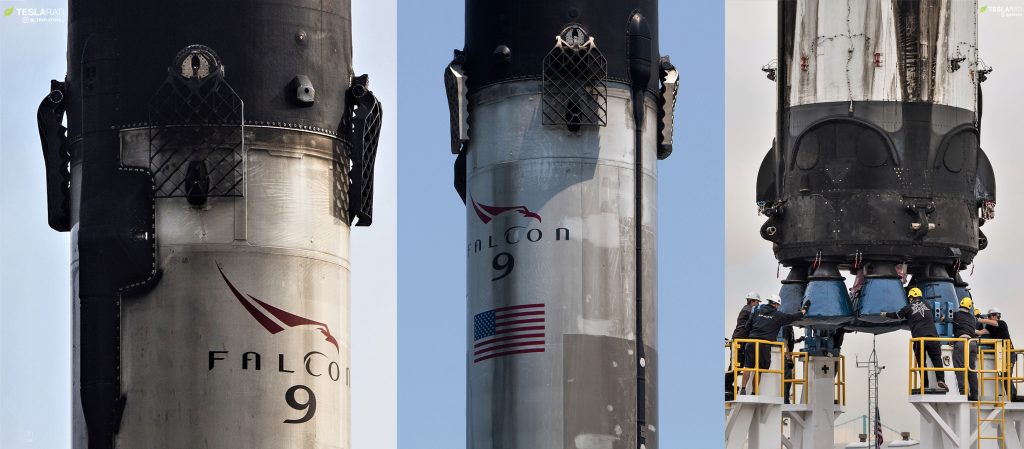
In simple terms, those dozens of flights and reuses all translate to lots and lots (and lots) of high-fidelity data. That data – and often the hardware it’s connected to – can be used to extensively cross-check and improve the Falcon 9 and Heavy engineering models SpaceX created while designing, producing, and ground testing the Block 5 upgrade prior to its flight debut. It can also be used to upgrade to the rocket where needed, especially useful when it comes to reusability.
Although Falcon Block 5 boosters already appear to be exceptionally reliable and reusable, having checked off multiple third-flight and fourth-flight milestones in the last year, there is always room for improvement – especially if Musk is still serious about his long-held goal of launching the same Falcon 9 booster twice in ~24 hours. Along those lines, it’s safe to assume that at least some of the boosters that come off the assembly line after B1046 feature design tweaks meant to optimize for reliability and reusability, among other things.
For the most part, it seems that SpaceX is no longer aggressively pursuing ~24-hour booster turnaround, although they very likely intend to continue cutting the work hours required for (and thus the cost of) each reuse. B1046’s demise may shrink SpaceX’s reusable rocket fleet by one but the company will continue to debut the occasional new booster throughout 2020, ultimately ensuring that the fleet grows over time. Ultimately, if SpaceX only needs to spend a week or two inspecting and refurbishing each Block 5 booster and has a fleet of 10-20 or more, 24-hour turnaround may not even be necessary to achieve the desired results it was meant to represent.
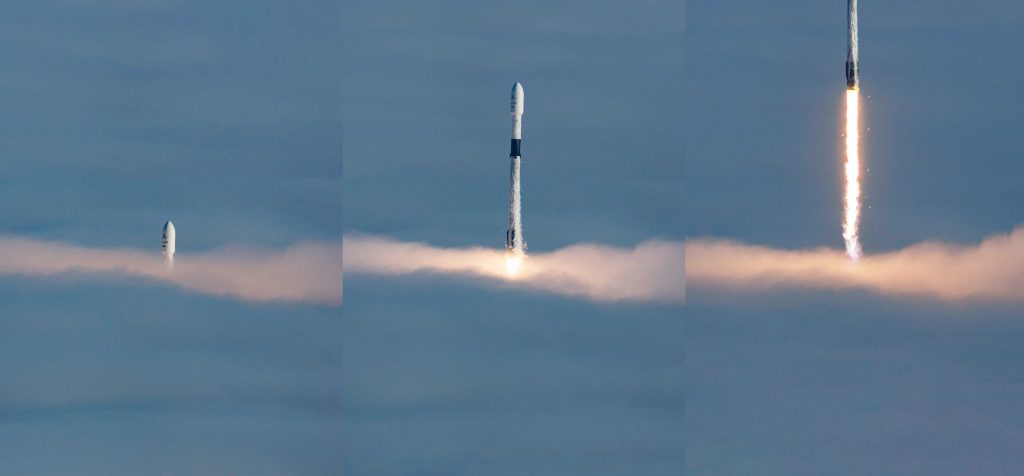
Finally, SpaceX aims to launch its fourth batch of 60 Starlink satellites overall as few as ~52 hours after Falcon 9’s Crew Dragon In-Flight Abort mission and nextspaceflight.com reports that Falcon 9 B1051 will support the Starlink V1 L3 mission – the booster’s third orbital-class launch in ~10 months. Thankfully, B1051 – formerly tasked with supporting Crew Dragon’s Demo-1 orbital launch debut in March 2019 and Canada’s Radarsat Constellation Mission (RCM) in June 2019 – will almost certainly be attempting its second drone ship landing and third recovery overall.
Check out Teslarati’s Marketplace! We offer Tesla accessories, including for the Tesla Cybertruck and Tesla Model 3.

News
Tesla accused of infringing robotics patents in new lawsuit
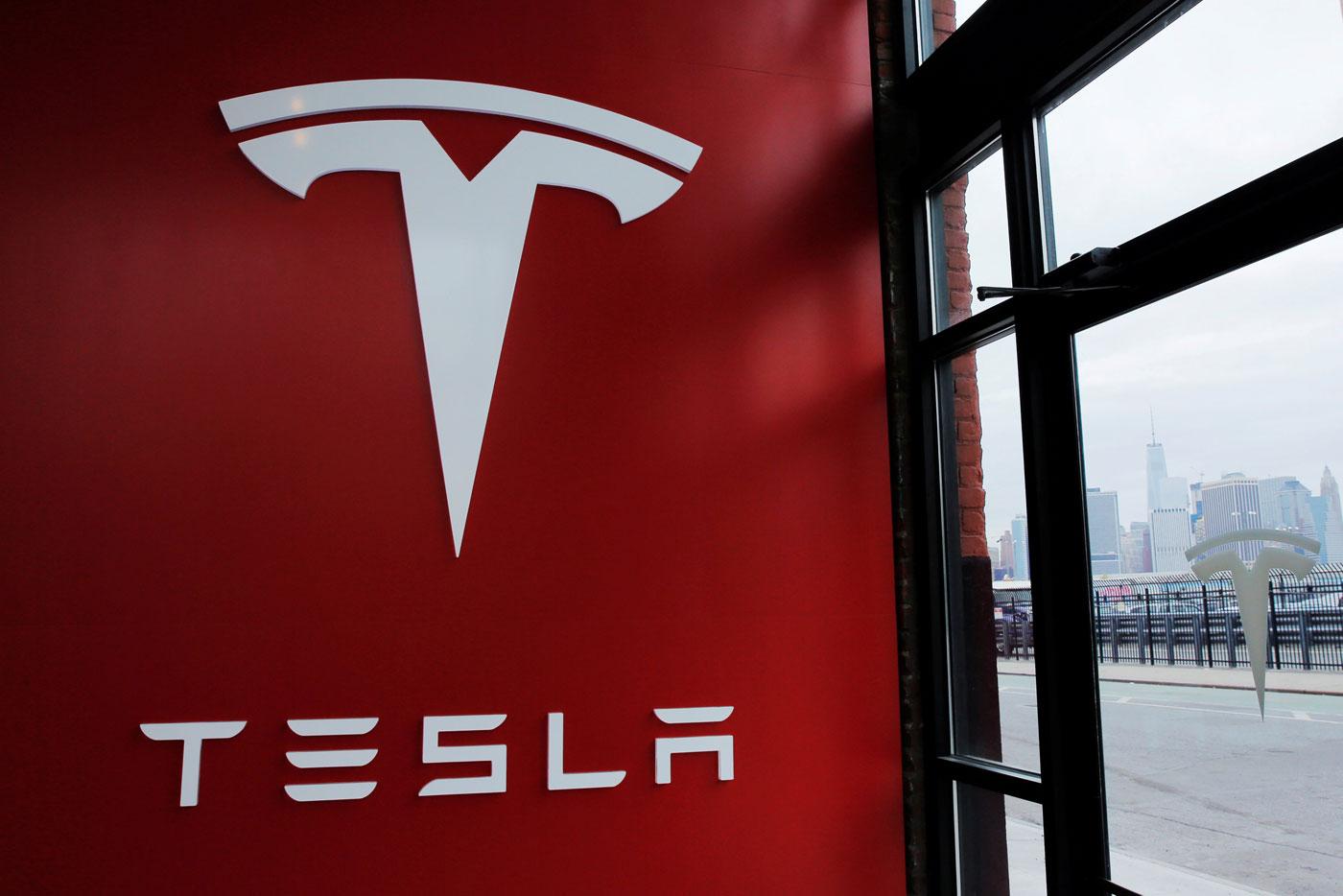
Tesla is being accused of infringing robotics patents by a company called Perrone Robotics, which is based out of Charlottesville, Virginia.
The suit was filed in Alexandria, Virginia, and accuses Tesla of knowingly infringing upon five patents related to robotics systems for self-driving vehicles.
The company said its founder, Paul Perrone, developed general-purpose robotics operating systems for individual robots and automated devices.
Perrone Robotics claims that all Tesla vehicles utilizing the company’s Autopilot suite within the last six years infringe the five patents, according to a report from Reuters.
Tesla’s new Safety Report shows Autopilot is nine times safer than humans
One patent was something the company attempted to sell to Tesla back in 2017. The five patents cover a “General Purpose Operating System for Robotics,” otherwise known as GPROS.
The GPROS suite includes extensions for autonomous vehicle controls, path planning, and sensor fusion. One key patent, U.S. 10,331,136, was explicitly offered to Tesla by Perrone back in 2017, but the company rejected it.
The suit aims to halt any further infringements and seeks unspecified damages.
This is far from the first suit Tesla has been involved in, including one from his year with Perceptive Automata LLC, which accused Tesla of infringing on AI models to interpret pedestrian/cyclist intent via cameras without licensing. Tesla appeared in court in August, but its motion to dismiss was partially denied earlier this month.
Tesla also settled a suit with Arsus LLC, which accused Autopilot’s electronic stability features of infringing on rollover prevention tech. Tesla won via an inter partes review in September.
Most of these cases involve non-practicing entities or startups asserting broad autonomous vehicle patents against Tesla’s rapid iteration.
Tesla typically counters with those inter partes reviews, claiming invalidity. Tesla has successfully defended about 70 percent of the autonomous vehicle lawsuits it has been involved in since 2020, but settlements are common to avoid discovery costs.
The case is Perrone Robotics Inc v Tesla Inc, U.S. District Court, Eastern District of Virginia, No. 25-02156. Tesla has not yet listed an attorney for the case, according to the report.
News
Tesla has passed a critical self-driving milestone Elon Musk listed in Master Plan Part Deux
Tesla China announced that the company’s Autopilot system has accumulated 10 billion kilometers of driving experience.

Tesla has passed a key milestone, and it was one that CEO Elon Musk initially mentioned more than nine years ago when he published Master Plan, Part Deux.
As per Tesla China in a post on its official Weibo account, the company’s Autopilot system has accumulated over 10 billion kilometers of real-world driving experience.
Tesla China’s subtle, but huge announcement
In its Weibo post, Tesla China announced that the company’s Autopilot system has accumulated 10 billion kilometers of driving experience. “In this respect, Tesla vehicles equipped with Autopilot technology can be considered to have the world’s most experienced and seasoned driver.”
Tesla AI’s handle on Weibo also highlighted a key advantage of the company’s self-driving system. “It will never drive under the influence of alcohol, be distracted, or be fatigued,” the team wrote. “We believe that advancements in Autopilot technology will save more lives.”
Tesla China did not clarify exactly what it meant by “Autopilot” in its Weibo post, though the company’s intense focus on FSD over the past years suggests that the term includes miles that were driven by FSD (Beta) and Full Self-Driving (Supervised). Either way, 10 billion cumulative miles of real-world data is something that few, if any, competitors could compete with.
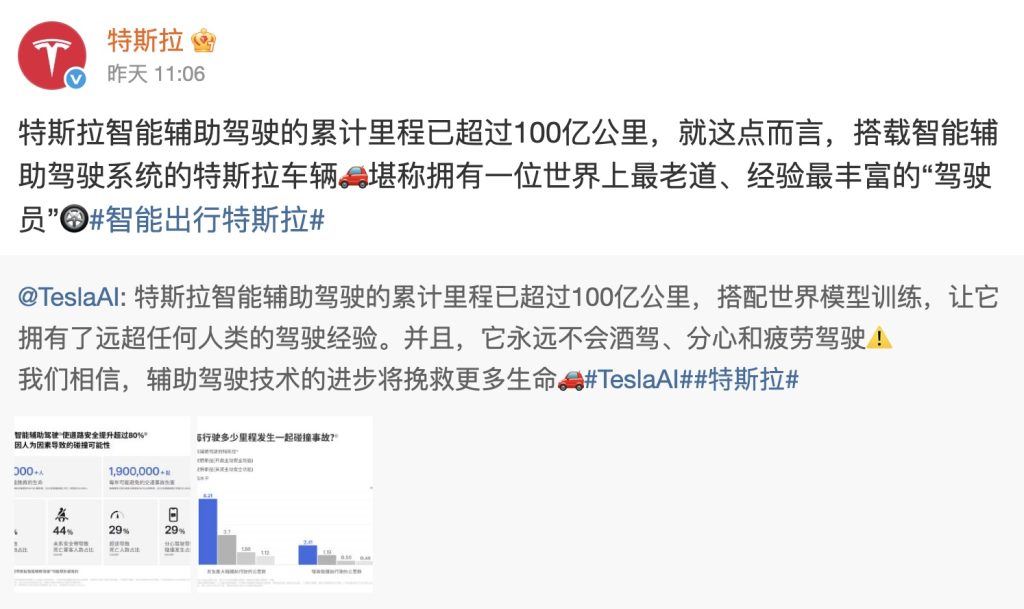

Elon Musk’s 10-billion-km estimate, way back in 2016
When Elon Musk published Master Plan Part Deux, he outlined his vision for the company’s autonomous driving system. At the time, Autopilot was still very new, though Musk was already envisioning how the system could get regulatory approval worldwide. He estimated that worldwide regulatory approval will probably require around 10 billion miles of real-world driving data, which was an impossible-sounding amount at the time.
“Even once the software is highly refined and far better than the average human driver, there will still be a significant time gap, varying widely by jurisdiction, before true self-driving is approved by regulators. We expect that worldwide regulatory approval will require something on the order of 6 billion miles (10 billion km). Current fleet learning is happening at just over 3 million miles (5 million km) per day,” Musk wrote.
It’s quite interesting but Tesla is indeed getting regulatory approval for FSD (Supervised) at a steady pace today, at a time when 10 billion miles of data has been achieved. The system has been active in the United States and has since been rolled out to other countries such as Australia, New Zealand, China, and, more recently, South Korea. Expectations are high that Tesla could secure FSD approval in Europe sometime next year as well.
Elon Musk
SpaceX maintains unbelievable Starship target despite Booster 18 incident
It appears that it will take more than an anomaly to stop SpaceX’s march towards Starship V3’s refinement.

SpaceX recently shared an incredibly ambitious and bold update about Starship V3’s 12th test flight.
Despite the anomaly that damaged Booster 18, SpaceX maintained that it was still following its plans for the upgraded spacecraft and booster for the coming months. Needless to say, it appears that it will take more than an anomaly to stop SpaceX’s march towards Starship V3’s refinement.
Starship V3 is still on a rapid development path
SpaceX’s update was posted through the private space company’s official account on social media platform X. As per the company, “the Starbase team plans to have the next Super Heavy booster stacked in December, which puts it on pace with the test schedule planned for the first Starship V3 vehicle and associated ground systems.”
SpaceX then announced that Starship V3’s maiden flight is still expected to happen early next year. “Starship’s twelfth flight test remains targeted for the first quarter of 2026,” the company wrote in its post on X.
Elon Musk mentioned a similar timeline on X earlier this year. In the lead up to Starshp Flight 11, which proved flawless, Musk stated that “Starship V3 is a massive upgrade from the current V2 and should be through production and testing by end of year, with heavy flight activity next year.” Musk has also mentioned that Starship V3 should be good enough to use for initial Mars missions.
Booster 18 failure not slowing Starship V3’s schedule
SpaceX’s bold update came after Booster 18 experienced a major anomaly during gas system pressure testing at SpaceX’s Massey facility in Starbase, Texas. SpaceX confirmed in a post on X that no propellant was loaded, no engines were installed, and personnel were positioned at a safe distance when the booster’s lower section crumpled, resulting in no injuries.
Still, livestream footage showed significant damage around the liquid oxygen tank area of Booster 18, leading observers to speculate that the booster was a total loss. Booster 18 was among the earliest vehicles in the Starship V3 series, making the failure notable. Despite the setback, Starship V3’s development plans appear unchanged, with SpaceX pushing ahead of its Q1 2026 test flight target.








